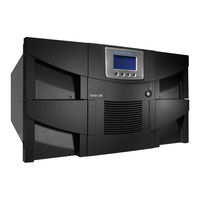Quantum Scalar i80 Tape Library Manuals
Manuals and User Guides for Quantum Scalar i80 Tape Library. We have 12 Quantum Scalar i80 Tape Library manuals available for free PDF download: Maintenance Manual, User Manual, Quick Start Manual, Replacement Manual, Installation Manual
Advertisement
Advertisement
Quantum Scalar i80 Replacement Manual (4 pages)
Power Supply Replacement
Quantum Scalar i80 Replacement Manual (2 pages)
Power Supply Filler Plate Replacement











